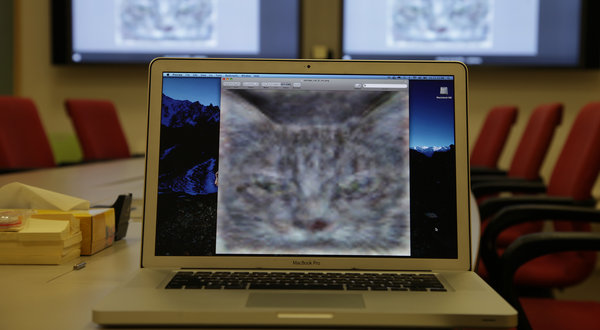You may not be aware about Google’s laboratory X, this lab is famous for developing original projects such as a car, managing his own movement, and additional points of reality. In the same laboratory for several years a team of researchers is developing a model of the human brain.

To this end, they have created one of the largest neural networks for machine learning, bringing together 16 thousand computer processors. This system is connected to the Internet to conduct training. One of the sources of information was used on YouTube. It is self-learning system was looking for cats. Despite the fact that such a task for a man may look ridiculous and absurd, for a computer system, it is quite difficult. The fact is that during the operation, the system has not received any assistance from a person in terms of identification of objects. According to scientists, the idea was not to teach the machine to identify anything on the basis of given parameters, and give it a lot of information, from which they could learn on their own.
Researchers from Google have noted that, despite the fact that the Internet has a lot of videos featuring cats, the actual results of the experiment were somewhat surprising. Thus, the system showed about 2 times more accurate definition of the objects in a changing list of 20 thousand objects in comparison with previous similar systems.
It is noted that this study could make a breakthrough in computer science, which seeks to reduce the cost calculations for large clusters of computers. It can also lead to significant advances in areas such as machine vision and perception, speech recognition and translation of languages. In addition, the study failed to show Google that the results of machine learning algorithms significantly improved by increasing the amount of processed data.
Despite its success in creating a self-learning computer system, it is noted that its ability to still significantly inferior to the brain. However, creating a complete model of the human cerebral cortex can be completed by the end of this decade.